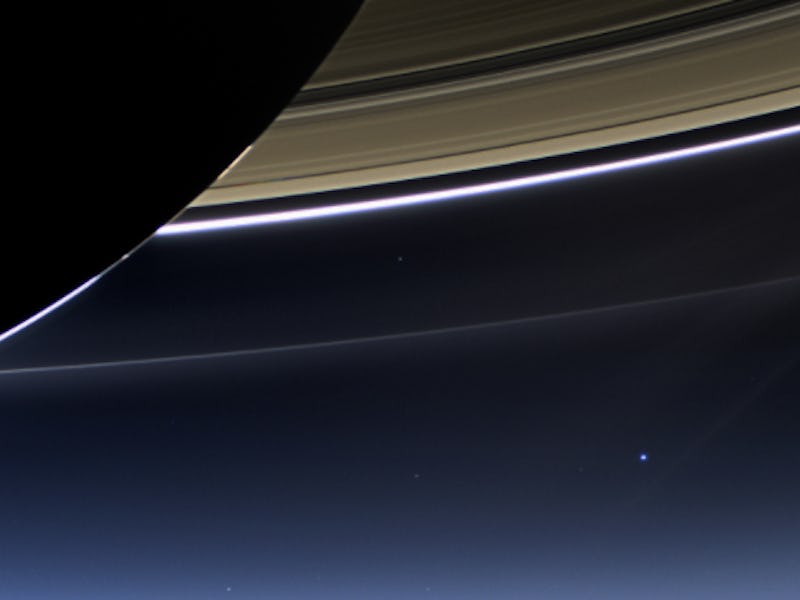This Beautiful Photo of Saturn and Earth Will be Cassini's Legacy
Remembering 'The Day the Earth Smiled.'

The NASA spacecraft Cassini ends its mission on September 15, after spending 20 years in space and capturing over half a million images of Saturn and beyond. One image in particular over its double-decade career managed to really captivate the interest of Earthlings the world over — in part because they were in on the joke.
“The Day the Earth Smiled,” taken on July 19, 2013, was Cassini’s big group photo of Earth from behind the glowing rings of Saturn.
Calling it “the first interplanetary photobomb,” NASA encouraged everyone everywhere to take a moment on July 19 to go outside and wave at Saturn. As Carolyn Porco, leader of the Cassini imaging team who conceived of the idea, wrote just prior to the event:
I hope, at the appropriate time, regardless where or on which side of the planet you are, that you stop what you’re doing, go outside, gather together with friends and family, contemplate the utter isolation of our world in the never-ending blackness of space, relish its lush, life-sustaining beauty, appreciate the rarity it is among the Sun’s planets, and marvel at your own existence and that of all life on planet Earth.
The result was a gorgeous image of Earth below the rings of Saturn; a tiny dot 898.414 million miles away. It was an awe-inspiring example of space’s vastness, not to mention the incredible fact that within that tiny dot, space nerds the world over were grinning up at the sky.
Saturn, from Cassini's perspective, along with a tiny bright dot below the rings that is Earth.
Among its list of accomplishments, “The Day the Earth Smiled” was an especially rare feat for Cassini. The spacecraft was in the perfect position to photograph Saturn as it eclipsed the sun, brightening the eight planet’s rings and allowing the spacecraft get that crucial view of Earth. Several photos were taken using red, green and blue spectral filters, and then combined to create the natural color view we see in the image.
There we are!
Cassini was responsible for a number landmark events during its 20 year mission. It landed the Huygens probe onto Saturn’s Titan moon, and its flybys helped scientists discover geyser-like jets of water vapor and ice particles that come from an underground ocean on Enceladus.
Artist's concept of the spacecraft Cassini hanging out between Saturn and its innermost ring.
In its final act on September 15, Cassini will descend into Saturn’s atmosphere, transmitting data until it eventually disintegrates.
Must Read: 5 Stunning Visuals That Explain Cassini’s Final Days